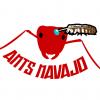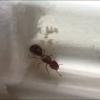Have any NE folk notice their colonies slowing down, filling up on food, or have little to no larvae growth? I'm keeping a Camponotus pennsylvanicus colony in a grout nest and two Tapinoma sessile colonies in test tubes. This is my second year for my Camponotus ant with far more inactive workers and brood this year and am observing less activity despite a heating cable and regular feedings. I figure they're ready for gradual colder temps for a month then into brumation for winter starting in October. The two T. sessile colonies are new for me and they've got only a few workers, but they're still active so far and it'll be a new experience setting them up for winter break. Last winter, I had success putting my nest in an insulated lunch bag with a digital thermometer reading the clipped bag's temps in my garage, which stayed above 40-ish degrees F.
I'm just curious how your colonies are prepping for diapause?


















